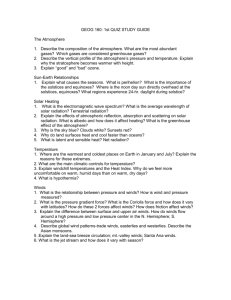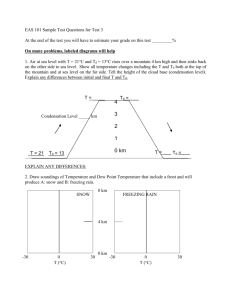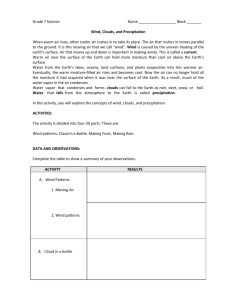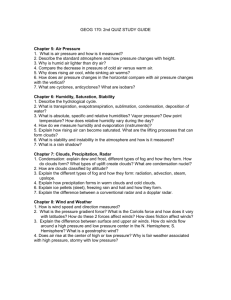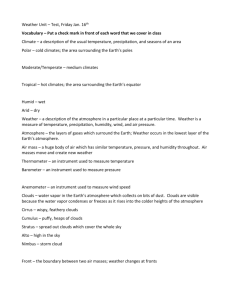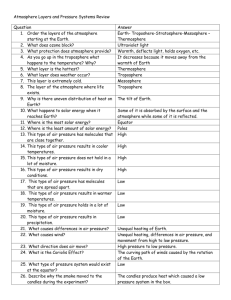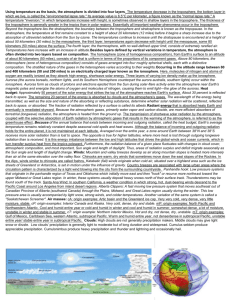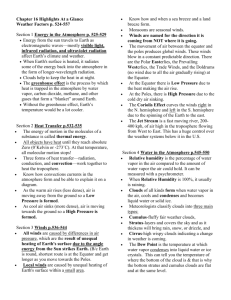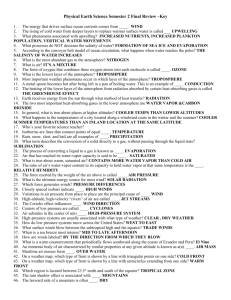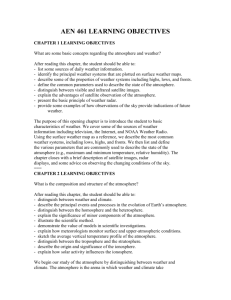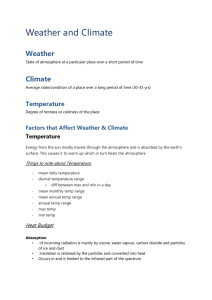geog 170: meteorology 2nd quiz study guide
advertisement
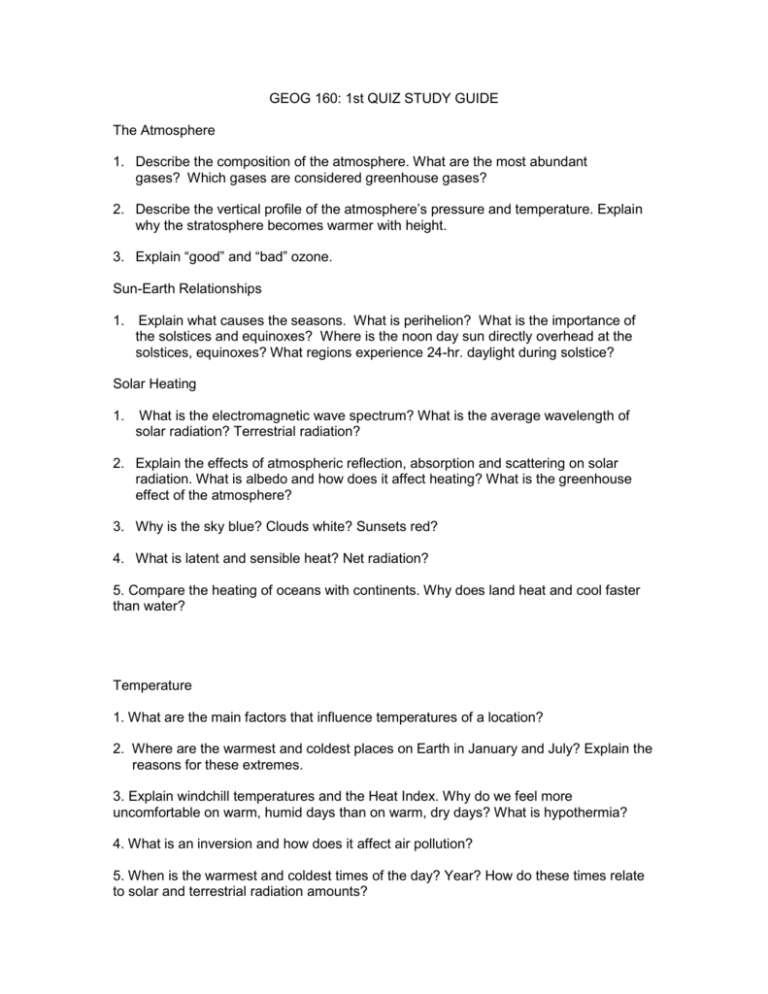
GEOG 160: 1st QUIZ STUDY GUIDE The Atmosphere 1. Describe the composition of the atmosphere. What are the most abundant gases? Which gases are considered greenhouse gases? 2. Describe the vertical profile of the atmosphere’s pressure and temperature. Explain why the stratosphere becomes warmer with height. 3. Explain “good” and “bad” ozone. Sun-Earth Relationships 1. Explain what causes the seasons. What is perihelion? What is the importance of the solstices and equinoxes? Where is the noon day sun directly overhead at the solstices, equinoxes? What regions experience 24-hr. daylight during solstice? Solar Heating 1. What is the electromagnetic wave spectrum? What is the average wavelength of solar radiation? Terrestrial radiation? 2. Explain the effects of atmospheric reflection, absorption and scattering on solar radiation. What is albedo and how does it affect heating? What is the greenhouse effect of the atmosphere? 3. Why is the sky blue? Clouds white? Sunsets red? 4. What is latent and sensible heat? Net radiation? 5. Compare the heating of oceans with continents. Why does land heat and cool faster than water? Temperature 1. What are the main factors that influence temperatures of a location? 2. Where are the warmest and coldest places on Earth in January and July? Explain the reasons for these extremes. 3. Explain windchill temperatures and the Heat Index. Why do we feel more uncomfortable on warm, humid days than on warm, dry days? What is hypothermia? 4. What is an inversion and how does it affect air pollution? 5. When is the warmest and coldest times of the day? Year? How do these times relate to solar and terrestrial radiation amounts? Winds 1. What is the relationship between pressure and winds? What are the 3 corrections that need to be made to a barometer’s reading before placing on a surface weather map? How is wind and pressure measured? 2. What is the pressure gradient force? What is the Coriolis force and how does it vary with latitudes? How do these 2 forces affect winds? How does friction affect winds? 3. Explain the difference between surface and upper air winds. How do winds flow around a high pressure and low pressure center in the N. Hemisphere, S. Hemisphere? 4. Describe global wind patterns-trade winds, easterlies and westerlies. Describe the Asian monsoons. 5 .Explain the land-sea breeze circulation; mt.-valley winds; Santa Ana winds. 6. What is the jet stream and how does it vary with season? Humidity 1. Describe the hydrological cycle. 2. What factors affect the rate of evaporation? 3. What is absolute, specific and relative humidities? Vapor pressure? Dew point temperature? How does relative humidity vary during the day? 4. Condensation: explain dew and frost, different types of fog and how they form. How do clouds form? What types of uplift create clouds? 5. What conditions are needed for clouds to form? Which clouds produce precipitation? 7. What is the difference between a stable and unstable atmosphere? What are adiabatic processes and how do they affect cloud formation? 8. What are the primary ways clouds form? Why are cumulus clouds flat on the bottom?


